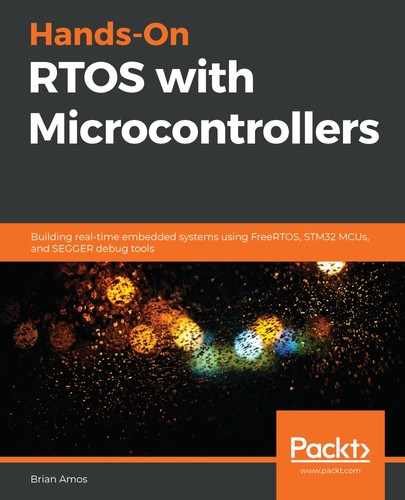In this chapter, we took a deep dive into creating an efficient interface to a complex driver stack that was very convenient to use. Using stream buffers, we analyzed trade-offs between decreasing latency and minimizing CPU usage. After a basic interface was in place, it was extended to be used across multiple tasks. We also saw an example of how a mutex could be used for ensuring that a multi-stage transaction remained atomic, even while the peripheral was shared between tasks.
Throughout the examples, we focused on performance versus ease of use and coding effort. Now that you have a good understanding of why design decisions are being made, you should be in a good position to make informed decisions regarding your own code base and implementations. When the time comes to implement your design, you'll also have a solid understanding of the steps that need to be taken to guarantee race condition-free access to your shared peripheral.
So far, we've been discussing trade-offs when creating drivers, so that we write something that is as close to perfect for our use case as possible. Wouldn't it be nice if (at the beginning of a new project) we didn't need to re-invent the wheel by copying, pasting, and modifying all of these drivers every time? Instead of continually introducing low-level, hard-to-find bugs, we could simply bring in everything we know that works well and get to work adding new features required for the new project? With a well-architected system, this type of workflow is entirely possible! In the next chapter, we'll cover several tips on creating a firmware architecture that is flexible and doesn't suffer from the copy-paste-modify trap many firmware engineers find themselves stuck in.
